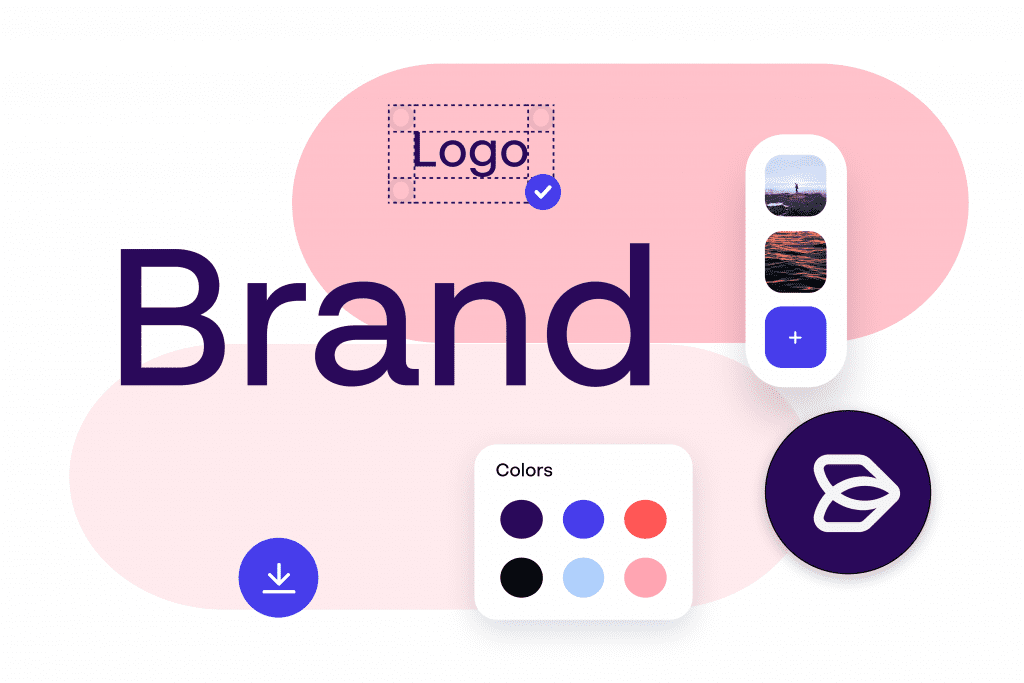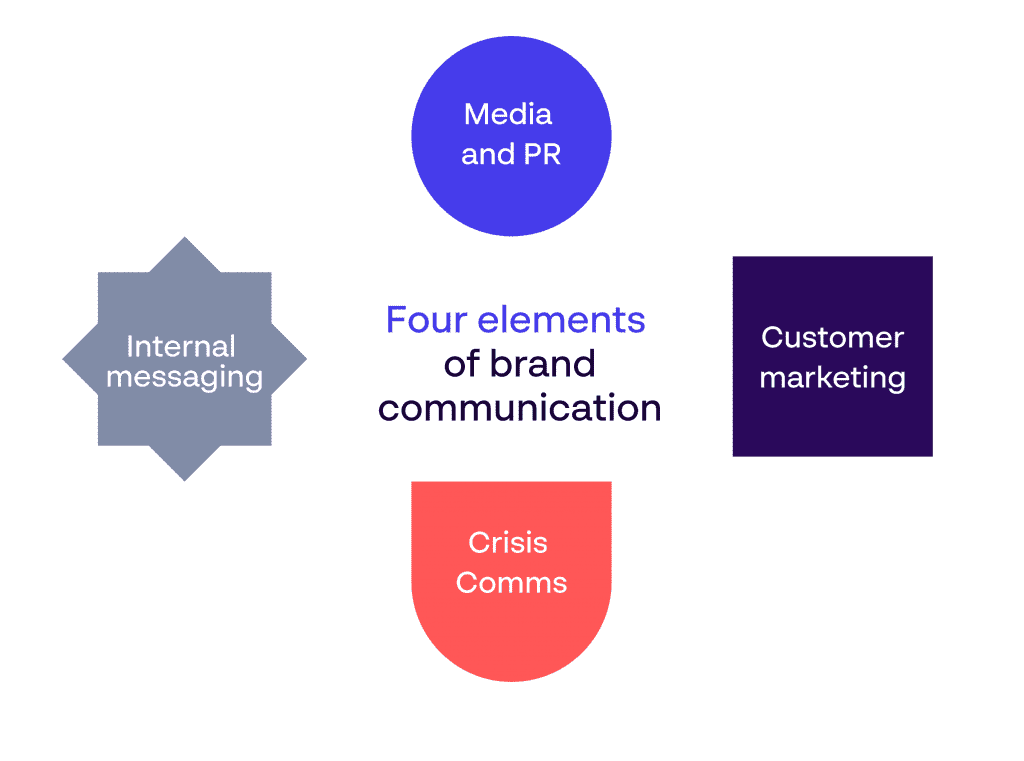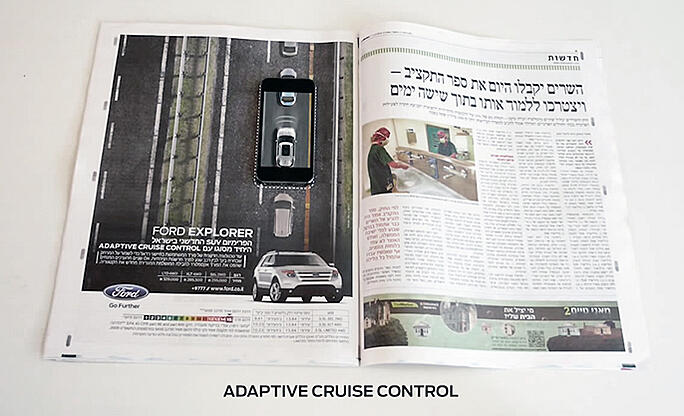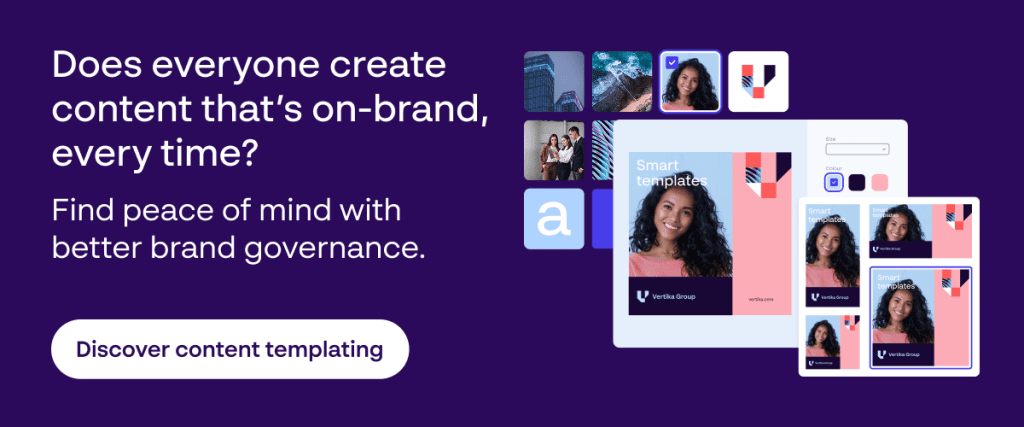As a company, you’re always looking to uncover, recruit and retain the best talent out there. People who will work to achieve your goals. Fit into your culture. Have that drive for success.
But there’s a problem – your competitors have the exact same aspiration. And with the reputation of a company more visible than ever before, be it through a jobseeker’s Google search or reviews on comparator sites like Glassdoor and Indeed, presenting a powerful, compelling employer proposition is more crucial and more challenging than ever before.
With a finite pool of truly exceptional individuals that can make a difference to your organisation, it is essential that you can stand out from the crowd in attracting the talent that’s out there, as well as keeping hold of the people you already have.
That is where your employer branding strategy comes in. It sets you on the journey to locating prospects that fit with your organisation’s ambitions and clearly demonstrating why they would feel right at home in your teams.
Here, we’re going to delve into greater detail on what your employer branding strategy is and outline thirteen critical steps to developing one that connects you with the best talent available.
What is an employer branding strategy?
At its core, the definition of an employer brand strategy is a documented, universal approach to translating your organisation’s values, approaches and personality to your audience. It’s a comprehensive offering of everything you have to offer as a workplace to benefit your most important asset – your employees.
It’s how you project your employer brand – how you are viewed by your current workforce and people you hope to one day recruit. Your employer branding strategy needs to transparently and consistently promote these aspects to both your existing team and those you intend to recruit in order to achieve three salient goals:
- Positively distinguish your offering from your competitors’
- Demonstrate why someone would want to work in your organisation
- Illustrate how your brand is developing and strengthening over time
Not all employer branding strategies are created equal, and creating one that ticks all the right boxes requires clear thinking, total buy-in from your team members and refinements over time. By utilising the following best practices, you’ll find yourself in an ideal position to attract the talent that can drive your brand forward.
How important is an employer branding strategy?

As mentioned earlier, Glassdoor and Indeed are just two examples of platforms that highlight your company’s culture and processes. There’s your website and other marketing channels to consider, and word of mouth from employees spreading on forums.
If your negatives outweigh your positives, or you are not dedicating the same attention to your employer branding strategy as your competitors, you stand to miss out on top talent, and even losing current team members in the process.
Developing a brand that appeals and connects with today’s increasingly web-savvy job candidate is vital, and can result in numerous benefits, including:
- Improved employer attractiveness to talented individuals interested in working in your industry
- Greater motivation among your existing employees by feeling more connected and in-sync with your brand values
- Tangible drops in the costs associated with hiring new talent and retaining them long-term
- A workforce that actively advocates and promotes your brand, extending your reach to other candidates and customers
- A clear, unified vision for your organisation to move towards, with all people associated with your company pushing it in that direction
13 steps to best practice with your employer branding strategy
Effective employer branding strategies can be the difference-maker in an ideal candidate’s decision to join your organisation over the other options available. Following these best practices gives you greater control over the messages you project, and the ability to influence how these individuals see your brand.
1. Audit the perception of your brand
Before developing your employer branding strategy, it is important you have a clear understanding of how people view your company initially. Otherwise, how will you know what adjustments are required?
A thorough audit of your current brand perception, both through the eyes of your employees and your external audiences, lets you understand if your current messaging and reputation is projecting the values and attractiveness you are aiming for. Especially in organisations with teams spread across the globe, it is easy for your values to be mistranslated, or be in needing refinement to connect with local audiences.
There are a host of places you should be examining, including:
- Employment review sites – most candidates will be researching these in detail before making a decision on their next employer. What are people saying about your company’s processes and culture? Do you get rated five stars? Do you come across as an attractive brand? Are there negative reviews? If so, have you addressed them effectively?
- Social media – investing in social listening tools can help you track mentions of your organisation over social media, so you gain a deeper insight into how people view your brand.
- Employee feedback – conducting internal surveys or having open meetings with your teams helps you identify problems that might be affecting your ability to attract and retain talent, so they can be rectified as part of your unified employer brand strategy.
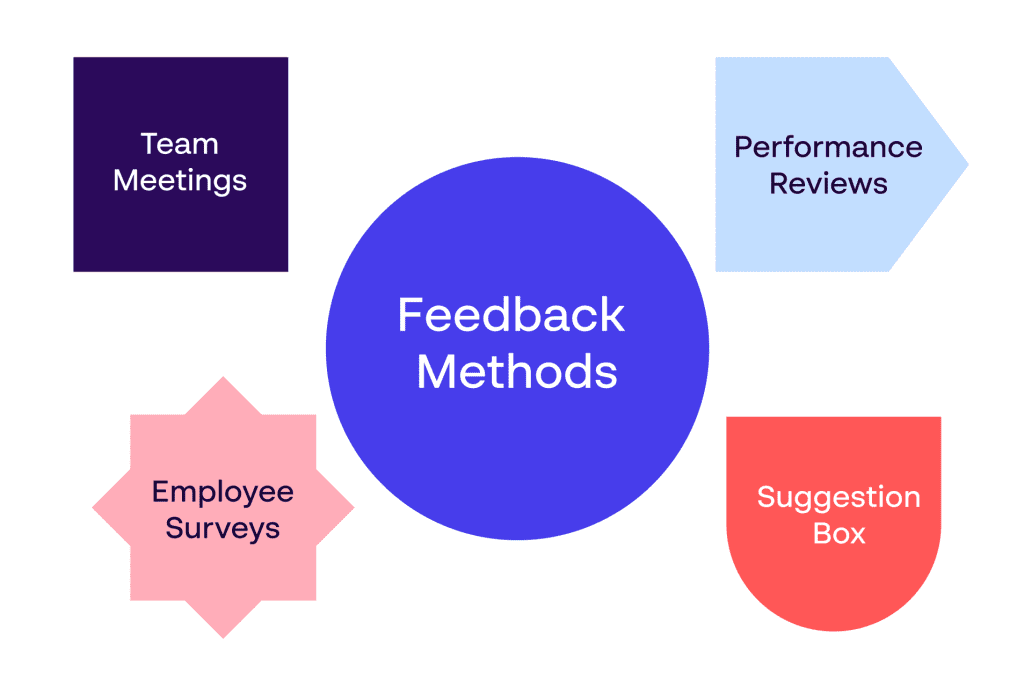
- Google alerts – like on social media, it is important to closely monitor the reputation your brand is presenting on Google and other search engines, and determine if this is in line with your objectives.
2. Build your employee persona
Who is your ideal candidate? Without a clear answer to this question, you are in no position to effectively develop an employer branding strategy that targets a person with the personality, aspirations and skills to seamlessly join your teams.
Dedicate time to breaking down the qualities your target audience possesses:
- What are their main personality traits?
- What causes do they care about?
- What motivates them day-to-day?
- Where do they research for information?
- What roles and responsibilities do they want?
- Who influences their decisions?
This is just a sample of the line of questioning you should be asking about what constitutes the right employee for your brand. Of course, these qualities will differ according to the specific staff role and location you are marketing to, but at a fundamental level there must be a template that helps you craft branding that appeals to the right candidate.
Furthermore, by clarifying your ideal candidate, it is more likely that their transition into joining your team and growing within your organisation will be more satisfying and fulfilling.
3. Establish your company’s differentiators
Knowing what makes your company unique goes a long way to crafting your brand story.
It’s your organisation’s mission statement. Its values. Its social responsibilities. Its culture.
This feeds into your employer branding strategy by determining why someone would choose to join or stay with your company over X competitor. To effectively establish your differentiators or USPs therefore, it is important to reassess your own values and compare these with potential alternatives for recruits.

What issues do you stand for that others don’t? What aspects of your work culture can you promote that others aren’t? Where does your brand excel and stand out against what your competitors can produce? The answers to these questions will define the unique characteristics your company has to boost your attractiveness to recruits.
86% of HR professionals believe recruitment is now on an equal footing with ‘marketing’. In the same way your marketing efforts are geared to set your products and services apart from the crowd, your employer brand strategy needs to working just as hard to keep you in the minds of candidates and improve your current teams’ sense of belonging.
4. Determine and utilise your primary marketing channels
How are you going to reach your prospective recruits, or best engage with your existing employees worldwide?
As part of establishing your audience persona, you should have a clearer understanding of what channels are going to connect with the candidates you’re seeking. But it is vital to have these defined as part of your employer branding initiatives, and that consistency is maintained across all platforms you choose to utilise.
By choosing the most effective channels, be it through a careers page on your website, paid media campaigns, or taking your employer branding to social media, you are in a position to tailor and target your audiences far more successfully. Ask employees how they first encountered your brand. Research the most popular platforms and forums for people working in your industry.

Once you’ve identified where you will engage with, use these platforms to frequently translate the inclusivity, vision and development of your brand and your employees. These images, blogs, testimonials and more across the most popular channels for your audience will drive a clear connection with what your brand stands for.
However, it is essential that your collateral feels in no way forced or fabricated. Authenticity is essential in truly appealing to your target audience. Without this genuine aspect, people will see through your attempts and will likely distrust you going forward.
5. Create your Employer Value Proposition
Your Employer Value Proposition (EVP) is your promise to current and future employees. It’s what you offer that will make them passionate about being part of your team, and as such is a lynchpin of your employer branding strategy.

At the centre of your EVP should be your employee – their motivations, their interests, their goals. Ideally your proposition will cover everything they are looking for to connect them to your company in a positive, fulfilling way. To this end, you should consider what matters to staff:
- Professional development?
- Holiday allowance?
- A thriving workplace culture?
- Healthcare benefits?
- Flexible working opportunities?
- A strong work-life balance?
- Bonuses?
- A comfortable environment?
- Unique perks like gym memberships and social outings?
- Charity work and corporate responsibility initiatives?
Most employer branding strategies should contain an assortment of these. But on top of these perks, you also need to consider the core values of your business. How highly your employees are valued. How committed you are to being the best in your industry. How much you care about supporting your customers.
Your Employee Value Proposition is central to how attractive your brand is to recruits, and how effectively you can retain the staff you already have on board. It should be kept transparent and in easy reach of any member of your organisation at all times to reinforce these messages, which is why our brand management solution’s capacity to ‘educate’ employees allows our clients to house core brand documents that can be accessed at any opportunity.
Develop your brand guidelines and assets or review your existing ones
Your company already likely has overarching brand guidelines, assets and logos – but what about your employer brand? Has this been properly defined?
In order to effectively implement your employer brand strategy, you need to have assets in place that sets your employer brand apart and the resources available to create and complement your campaigns.
This includes anything from country-specific guidelines, culturally appropriate imagery, colour palettes, logo variations, audience breakdowns by country, dos and don’ts for different territories and anything in between.
7. Invest in your current team’s development

One of the core reasons behind bad employee retention is a lack of career development and learning opportunities. Without a feeling of progression or investment in their growth, it is likely a member of your team will seek greener pastures to achieve their aims.
Remember, employees who feel they’re progressing are 20% more likely to still be at their companies in a year’s time. By presenting these training and development opportunities to your team, you’re demonstrating you’re committed to helping them realise their ambitions as part of your brand. This not only provides you with a more highly-skilled and motivated workforce, but a workforce that is engaged and appreciative to your organisation.
On top of this reduction in workplace boredom and increase in motivation, staff that feel more in-tune and connected to a brand are much more likely to become brand advocates. They will share your marketing materials on social media. Tell friends and family about how positive your environment is. Actively encourage people to join when vacancies become available.
With that, you are in a position to harness powerful employee branding that increases your trustworthiness and attractiveness to both potential recruits and customers.
8. Internal review and alignment
Anything you plan to implement in terms of strategy, particularly initially, should have buy-in from all appropriate stakeholders. This may include HR professionals in the business, internal recruiters, management and more. You may also want to get opinions from existing or new employees to make sure what you have developed fits in with internal perceptions.
Likewise, you may pick up on an insight internally that you may not have had access to without holding these conversations. Once everyone is happy on the direction you are taking for the employer brand strategy, you can begin developing the tools and resources to educate the wider teams and make sure everyone is on the same page moving forward.

9. Assess your strategy’s success
Finally, once you have your employer branding strategy in place, it is important that you are regularly assessing, fine-tuning and adapting it as your business and your industry landscape evolves. It is rare anything this important is nailed first time around, so it is critical that you over time analyse the results of your efforts and see where improvements can be made.
Examine the success of your employer branding initiatives against your pre-defined KPIs, which may include:
- Time-to-hire
- Cost-per-hire
- Number of applicants to each vacancy
- Improved brand reputation
- Frequency of employer brand marketing
If any of these are falling short of your aspirations, it is time to reassess, correct the course and tweak your approach until you see the results you’re looking for. Your employer branding strategy should never feel set in stone – as your overall business strategy changes to reflect new trends, patterns or requirements, your employer brand strategy should follow suit.
10. Talk to employees regularly
An employer brand strategy is never completely finished. This is because not only does the internal workforce demands evolve so rapidly, but as a brand grows so does what it’s trying to portray.
By having regular meetings or focus groups with a select few people you can ensure you don’t become subjective and stay rooted in what really matters to employees. Particularly if you are responsible for campaigns overseas, don’t rely on conversations with employees in your own location.
Ideally, teams would be looking after their own materials in their own country, but this isn’t always possible, so ensuring you get relevant, on-the-ground insight will be critical to your success.
11. Invest in video
Whether it’s for organic or paid for advertising, video is a powerful medium to get across your company’s true values. Potential candidates can read handbooks and website pages until their hearts are content but the truth is only video or a face-to-face visit can truly convey the experience of working somewhere.
This is particularly important for larger businesses, whose success has seen them become so vast that potential candidates may perceive them as a faceless corporation. Hearing from real people with real stories helps to humanise your brand in ways that written content can’t always achieve.
12. Create advocacy internally
If your existing employees don’t believe in your employer brand strategy, how can you expect prospective candidates to feel anything? Having members of the workforce on board is one thing, but having them actively promote your brand and company as a positive place to work can be more powerful than many other methods.
There’s an element of authenticity that candidates connect with. As long as your content isn’t forced or dishonest, the genuine passion should shine through. And if it does, you could be on to a winner.
13. Work out the logistics of your localisation
Working across multiple territories can be a nightmare to navigate. Having processes in place to ensure that any culturally sensitive content or translations are up to scratch is important for maintaining consistency and retaining a decent reputation, both internally and externally.
Anything deemed insensitive would not only ruin your chances of a successful recruitment campaign but also demoralise employees working in that region. It’s important that no matter in the world where they are, they feel connected and represented as part of the brand.
6 companies that have nailed their employer branding strategy
We’ve discussed the key steps to building an employer branding strategy, but what do these mean in practice? Below we discuss several companies across the globe that are maximising their potential to attract, recruit and retain the best talent available through their messaging, and what lessons you can pick up from them.
Vodafone
Vodafone is a prime example of a brand that felt it was doing everything right, but after careful analysis determined they were lacking in some areas. They quickly rectified this by conducting a thorough survey across 40,000 people to find out how people felt about the Vodafone brand.
This feedback became the heart of a new employer value proposition, which has proven far more effective in appealing to new and existing talent. At the core of this is something called the “two-way deal”, which promises team members that they will get as much out of their career at Vodafone as they’re willing to put in.
We’re proud of the role that our brand management solutions have played in supporting Vodafone’s employer branding strategy, helping them deliver greater campaign materials on a global scale.
Unilever
Another of our clients, Unilever, has built the strength and success of their employer brand through their status as a leader in their industry. By focusing on materials that emphasise their notable reputation in their employment brand strategy, they present an aspirational image to potential recruits, as well as improve the motivation of their existing employees.
Plus, Unilever in recent years adopted an approach of responding to every testimonial left for their company on Glassdoor, positive or negative. This willingness to respond to employee concerns and use their reviews to improve conditions has consistently kept the company among the “Best Place to Work in the UK” rankings.
L’Oréal
L’Oréal back in 2013 demonstrated the value of placing your employees at the centre of your employer branding strategy. After passing 300,000 followers on LinkedIn, they used this as an opportunity to highlight the stories and skills of their team members across the globe, emphasising the opportunities available at their business to potential jobseekers.
As it’s well-established that people trust other people over brands, L’Oréal’s approach was an effective way to build confidence in their brand through the voices of their own employees.
Zappos
While many fashion brands utilise their social media accounts for their products, Zappos pairs this with content demonstrating the benefits of joining their team. On Instagram in particular they share a substantial amount of CSR work, employee stories and company-wide events to help their brand feel more appealing to both jobseekers and the wider public.
Furthermore, their Insider Program has been a great innovation for their employer branding strategy. This allows anyone interested in joining their team one day access to information relevant to the company, allowing Zappos to source from the best available talent.
Hubspot
When Hubspot came under increased scrutiny after being named one of the Best Places to Work in 2018, this investigation simply shone a bigger spotlight on their commitment to listen to their employees and take their feedback and suggestions on board.
This extends to Hubspot’s social media presence, where they have regularly encouraged followers to leave comments that can act as jumping points for future content. It also champions its dedication to a fun company culture, with flexible work hours and tuition reimbursement.
Heineken
Pushing a strong visual element to their employer branding strategies, Heineken in early 2019 launched their “Going Places” campaign, focusing on celebrating the stories and development of 33 of their employees across the globe.
After conducting research into the values their brand represent, the company honed in on three pillars: authenticity, transcendence and longer-term brand management. These were combined into the campaign, inspiring their existing workforce and encouraging prospective employees about the potential they can unlock at Heineken.
The future of your employer branding strategy
We hope that this insight into the best practices of employer branding strategies will help guide your way to presenting a more attractive, comprehensive proposition to prospective candidates, as well as keep your current team members engaged with your brand.
The importance of employer branding can never go understated in how it drives the future of your organisation, and establishes a workforce that is motivated, committed and inspired to be part of your company. Achieving this on a global scale is far from straightforward, but through our market-leading brand management software, your team is able to efficiently execute your employer brand strategy.
Start empowering your team with an all-in-one brand management platform today.
Table of contents:
- What is an employer branding strategy?
- How important is an employer branding strategy?
- 13 steps to best practice with your employer branding strategy#steps
- 6 companies that have nailed their employer branding strategy
- The future of your employer branding strategy








